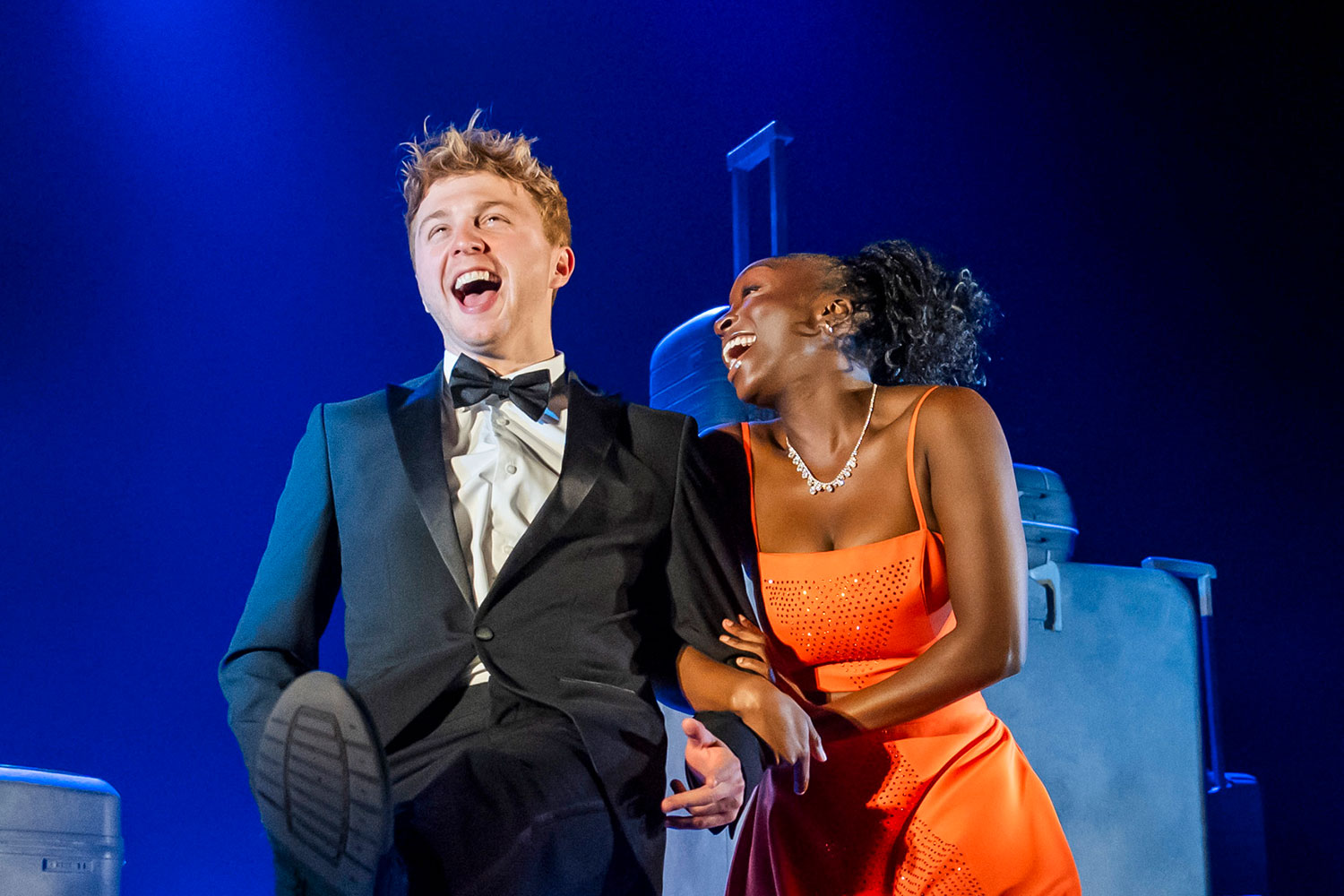When Harry Met Sally
Replacement casts are frequently viewed as the poor cousins of their role originators. Not so in the case of When Harry Met Sally.
At the Theatre Royal Haymarket, Molly Ringwald (famous from her 1980s teen flicks The Breakfast Club, Pretty in Pink and Sixteen Candles) and Michael Landes (apparently best known from American TV shows like Lois and Clark, though I have to admit I’d never heard of him before) have now taken over from Alyson Hannigan (Buffy the Vampire Slayer, American Pie) and Luke Perry (Beverly Hills 90210) in the stage versions of the screen roles immortalised by Meg Ryan and Billy Crystal.
While Landes and Ringwald may, in terms of current cachet, be smaller names than Perry and Hannigan, they make a much bigger impact. Individually, both West End newcomers seem at ease on stage, and they capture, with real assurance and comic sensitivity, their characters’ quirky vulnerabilities.
Collectively – and crucially – they also create genuine chemistry. By the end of their on-again, off-again relations, you are really rooting for this Harry and Sally (and what’s more even forgetting to compare them to their screen forebears).
Britons Dexter Fletcher and Susannah Wise also succeed in staking their own claims and filling out the slighter characters of Harry and Sally’s best friends and newlyweds, Jack and Marie.
The concept remains flawed (what’s the point of putting this on stage in the first place?) and Loveday Ingram’s production, with Ultz’s annoyingly screen-shrunk stage design, remains creaky and cumbersome. However, this new cast allows you to forgive much much more. They give this sweetly romantic, if overly familiar, story its charm back in an evening that’s suddenly become highly entertaining.
– Terri Paddock
NOTE: The following review dates from February 2004 and this production’s original cast.
Last year Matthew Perry (the Friends star) came to the West End in a tale of Sexual Perversity in Chicago. Now Luke Perry (the Beverley Hills 90210 star) is here in a story of a 12-year courtship that’s finally consummated, a play that could have been called Sexual Consummation in Manhattan.
That gives away the ending, I know. But then, the ending’s not only already known to anyone who has seen the film When Harry Met Sally that it’s based upon, but is telegraphed right from the beginning for anyone who hasn’t.
Though there isn’t therefore much tension in the journey, there should be some texture and charm along the way. But, like Sexual Perversity, this piece’s dramatic template features a series of short, supposedly snappy, scenes that revolve around the gulf of expectation between men and women, whether as friends or eventually lovers, that mitigate against it.
It’s sitcom writing in which the development (and any major life changes) of the characters happens offstage during the passage-of-time scene changes. The determination of director Loveday Ingram and especially designer Ultz to frame the proceedings cinematically also makes one wonder why we’re watching it in a theatre at all.
We might just as well have stayed at home and watched the original film on video. But then, it occurred to me on the press night, we were already, in a sense, doing exactly that. Albeit in an inferior re-make that gently nudges its original time frame a little forward towards a more immediately contemporary setting; employs somewhat less stellar stars though nevertheless still recognisable faces (Perry’s Harry is joined by American Wedding and Buffy the Vampire Slayer star Alyson Hannigan’s Sally); and can even be seen in a ‘letterbox’ edition that truncates the action into neat, precisely edited cinematic frames that don’t allow you the choice of where to look but tell you exactly where to direct your gaze.
Designer Ultz has installed a false proscenium that’s half the height of the actual one, within which there’s a rectangular white box on which the different scenes – from Manhattan apartment and gym to office, restaurant and bedrooms – are variously set. It also has the annoying effect of invariably cutting off the actors at the knees.
Marcy Kahan’s stage adaptation of Nora Ephron’s original script, however, is exactly what’s promised on the menu. However, unlike the customer in the diner who, in a re-creation of the movie’s most famous scene, hears Sally ’s fake orgasm in the adjoining booth and declares to the waitress “I’ll have whatever she’s having!”, I’d rather eat elsewhere. (The fact that the customer is a man, not a woman as in the film, is the only switch to the scene onstage.)
This is the theatrical equivalent of fast-food. Only place your order here if you like to know exactly what you’ll be getting and have it delivered quick, slick and somewhat flavourless.
– Mark Shenton










